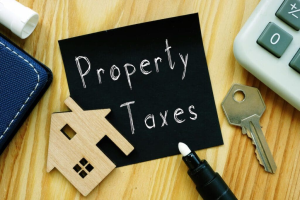The United Kingdom’s property tax landscape, long considered archaic and inefficient, is on the brink of its most significant shake-up in decades. Driven by a political desire for fairer taxation, greater economic efficiency, and a more stable revenue stream, policymakers are actively reviewing a radical set of proposals. These plans centre on replacing the much-maligned Stamp Duty Land Tax (SDLT) and the outdated Council Tax with new, proportional levies based on current property values.
At the heart of the reform is a proposed Proportional Property Tax (PPT), specifically a national levy on the sale of owner-occupied homes valued over ,000, designed to replace the most distortive elements of SDLT. Simultaneously, there are serious considerations for replacing Council Tax with a new Local Property Tax based on up-to-date valuations. While proponents argue this will revitalise the housing market and create a fairer system, critics warn of a stealth “wealth tax” that could punish asset-rich, income-poor homeowners, particularly those in the South East of England.
This article provides an in-depth analysis of the key proposals, the economic arguments for and against, and the practical implications for millions of homeowners and prospective buyers across the country.
The Two Pillars of Reform: National and Local Levies
The proposed overhaul is generally split into two distinct, but interconnected, tax changes: a national levy to replace the volatile SDLT, and a local levy to modernize the regressive Council Tax.
1. Replacing Stamp Duty with a National Proportional Property Tax (PPT)
The most discussed and imminent reform is the introduction of a new national property levy, often referred to as a Proportional Property Tax (PPT). Under the current SDLT system, the buyer pays a significant, upfront tax based on the transaction price, a cost which economists widely agree acts as a “sticky glue” that discourages people from moving home, even when their current property no longer suits their needs.
The Proposed Mechanism and Rates
The new PPT model aims to flip this system by taxing the seller at the point of sale, thereby removing the high upfront transaction cost for the buyer. This is viewed as a major boost to market liquidity and social mobility.
Key elements of the discussed national PPT include:
- Seller-Paid Levy: The tax would be paid by the homeowner when they sell their primary residence.
- The ,000 Threshold: The tax would only apply to homes valued above ,000. This threshold is crucial, as it is designed to exempt approximately two-thirds of all property sales in the UK, providing a substantial mobility boost to the mid-market.
- The Rate Structure (Indicative): Reports suggest the rate could be structured to be revenue-neutral to the SDLT it replaces, with indicative rates around on the property value above the ,000 threshold. A potential supplement of around on values over million has also been modelled to ensure the very highest value homes contribute proportionally more.
Example of National PPT Impact:
Consider the sale of a ,000 home, assuming a rate on the value over ,000:
- Current SDLT (Buyer Pays): ,000 (based on current tiered residential rates).
- Proposed PPT (Seller Pays): of £800,000−£500,000)=0.54% of ,000=£1,620.
While the seller faces a new cost, the buyer benefits from a near-,000 reduction in upfront moving costs, a saving that many economists believe would quickly unlock market activity.
2. Overhauling Council Tax with a Local Property Tax
The second major area of reform addresses Council Tax, a levy universally criticised for being regressive and based on property valuations from 1991. A million London home often falls into the same Council Tax band as a ,000 property in the Home Counties, meaning the million property owner pays a tiny fraction of their property’s value in local tax.
The Shift to Current Valuation and Proportionality
The goal of the new Local Property Tax (LPT) is to introduce a system that is both proportional and based on current, frequently updated valuations. This would provide local authorities with a fairer and more stable source of revenue.
- Mandatory Revaluations: A crucial part of any reform is regular revaluations to ensure the tax base reflects current reality, unlike the current 30-year-old system.
- A Continuous Proportional Rate: Instead of fixed bands, the tax would be a set, flat percentage of a property’s current market value, up to a certain level.
- Proposed Local Tax Structure: Some proposals suggest a rate of around annual charge on properties up to ,000, with a minimum annual payment (e.g., ). Crucially, this LPT is intended to cover the lower-to-mid value segment of the market, while the national PPT would tax the higher segment.

Example of Local Property Tax Impact:
A homeowner in the North of England with a ,000 property currently in a low Council Tax band might see a moderate increase in their annual bill, as their current tax is highly regressive. Conversely, a homeowner in the South East with a ,000 property currently in a low band could see a substantial rise, as their annual tax bill would finally reflect their property’s current value.
Economic Analysis: Efficiency vs. Equity
The debate surrounding the UK property tax overhaul is fundamentally a conflict between economic efficiency and social equity.
The Efficiency Argument: Unlocking the Housing Market
Economists from across the political spectrum largely support shifting from transaction taxes (like SDLT) to recurrent property taxes.
- Increased Mobility: SDLT creates a barrier to moving, known as the “lock-in effect.” It discourages downsizers from releasing larger family homes and stops workers from moving for better employment opportunities. Replacing it with a seller-paid levy or an annual tax removes this friction, boosting overall economic productivity.
- Stable Revenue: SDLT receipts are volatile, crashing during property market downturns, which destabilises public finances. Annual, recurrent property taxes provide a predictable, stable income stream for the government, regardless of yearly transaction volumes.
- Least Distortive Tax: Property and land taxes are considered the most economically efficient taxes, as they are non-distortionary—meaning they do not disincentivise economic activity like working, saving, or investing in the way that Income Tax or VAT does.
The Equity and Political Risks: The Wealth Tax Debate
Despite the clear economic advantages of recurrent property taxes, the reforms face significant political and social hurdles, primarily concerning equity.
- The ‘Asset-Rich, Income-Poor’ Dilemma: The most vulnerable group under an annual property tax is older homeowners who have seen their property value soar but live on fixed or low incomes (e.g., pensioners). They are asset-rich but income-poor, and a new, significantly higher annual tax could force them to sell their homes. Policymakers would need to introduce robust deferral mechanisms, allowing the tax to be paid out of the estate upon the sale or death of the owner, to mitigate this.
- Regional Inequality: A proportional system based on current market values will disproportionately affect homeowners in high-value areas like London and the South East. While this addresses current unfairness (where Londoners pay too little relative to property value), it represents a significant tax hike for a crucial demographic, potentially creating political backlash.
- The ,000 Cliff Edge: The national PPT’s reliance on a ,000 threshold creates a “cliff edge” effect. A home valued at ,999 would be entirely exempt from the national levy, while one at ,001 would be subject to it, potentially distorting demand and prices just below the threshold.
The Million ‘Mansion Tax’ Twist
Beyond the primary reforms, a third, high-value proposal has been discussed: the introduction of a new form of “Mansion Tax” by altering Capital Gains Tax (CGT). Currently, primary residences are exempt from CGT via Private Residence Relief (PRR).
Proposed Removal of CGT Relief for High-Value Sales
One proposal suggests removing or limiting PRR for properties sold above a high threshold, such as million. This would mean that the increase in a property’s value (the gain) would be subject to CGT (currently for basic-rate taxpayers and for higher-rate taxpayers).
This measure would capture some of the unearned property wealth appreciation and is aimed squarely at the very highest end of the market, primarily in London and the South East, where a significant portion of the country’s multi-million-pound properties are located. This approach is politically attractive as it targets the wealthiest property owners, but it would introduce another layer of complexity to the already convoluted property tax system.
Conclusion: The Long Road to Reform
The UK’s property tax system is widely acknowledged to be broken, failing on grounds of fairness, revenue stability, and economic efficiency. The current reform discussions represent a brave, if politically risky, attempt to address these structural failings by moving towards a proportional, value-based system.
For the majority of buyers, the abolition of Stamp Duty would be a transformative benefit, reducing upfront moving costs and potentially increasing housing transactions. For existing owners of high-value homes, however, the new levies, both national and local, represent a clear increase in their lifetime tax burden, shifting the focus from income to asset wealth.
While the exact rates and implementation timeline remain subject to political and economic flux, the direction of travel is clear: the age of complex, transaction-based property taxes is likely ending, ushering in an era of recurrent, proportional levies. Homeowners and investors must prepare for a system where the value of their property, not just the act of buying it, dictates their tax liability.

Frequently Asked Questions (FAQs)
1. What is the Proportional Property Tax (PPT) proposal?
The PPT is a proposed national levy on owner-occupied homes, typically paid by the seller at the point of sale. It is intended to replace Stamp Duty Land Tax (SDLT) for most transactions, focusing on properties valued above a specific threshold, such as ,000.
2. How is the proposed PPT different from the current Stamp Duty?
SDLT is a high, upfront tax paid by the buyer, which discourages housing market transactions and mobility. The proposed PPT would be a lower, seller-paid tax on the property’s value above a threshold, eliminating the major upfront cost barrier for buyers and making it easier to move.
3. Will the new property taxes replace Council Tax?
Yes, the plans include proposals to abolish the current Council Tax system, which is based on outdated 1991 valuations. It would be replaced with a new, continuous Local Property Tax (LPT) that is based on the current market value of the property and is proportional to that value.
4. Who will be most affected by these tax changes?
The primary beneficiaries will be first-time buyers and those purchasing properties under ,000 (who would no longer pay SDLT). Those who stand to lose are owners of high-value properties (especially in London and the South East) who would face new, higher annual LPT bills and a seller-paid national PPT upon sale.
5. What is the ‘asset-rich, income-poor’ problem, and how can it be solved?
This refers to long-term homeowners, often pensioners, who have a high-value property but low income. A higher annual LPT could cause financial hardship. The proposed solution is a deferral system, allowing the tax to be accumulated and paid out of the property’s estate when it is eventually sold.
6. Will these reforms cause house prices to fall?
Economists predict that abolishing the SDLT barrier for buyers will initially boost market activity and may stabilize prices in the mid-market. However, the introduction of higher, recurrent annual taxes on high-value homes could put downward pressure on prices in the London and South East markets, where the tax increase would be most keenly felt.

